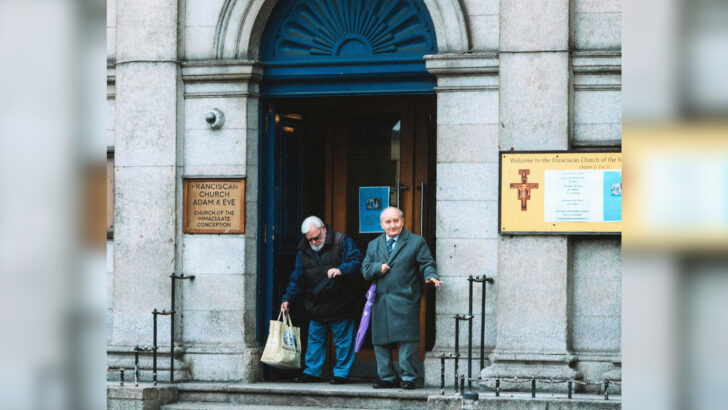“He was amazed at their lack of faith.” What a sentence! It was said two thousand years ago but could be said today. Jesus did beautiful things, he did great things, but all as people could say was “who does he think he is – sure he’s just but a carpenter.” Isn’t it extraordinary that despite all these amazing things people could still find it within themselves to dismiss Jesus. What hope is there for us then? But people are the same in every age.
Faith doesn’t die, and Christian faith never will. However, it does change its size, its shape and its structure. The one great example of this is St Benedict who was born in the 5th Century and died aged sixty-seven. He founded an order called the Benedictines who are still in existence today across the world – sixteen hundred years later. Now many of the monasteries are not that old, but the average life span of a monastery is 463 years. When I was researching these figures, I discovered that less than ten percent of companies listed in the United States are eighty-three years old and the oldest was 280 years old which was quite exceptional. So, there is a constant, which is the Benedictine spirituality, and then there are different expressions of it in the various monasteries. The size shape and structure continually change – some monasteries died out, but other ones formed.
Faith
The same happens to religious faith in many ways. There is one writer called Olivier Roy. He is an expert on the sociology of religion. He tells us that religious faith cannot exist on its own. This is my second point: faith always lives within a culture. Just as in the early Church Christianity had to find a way of dwelling within the Roman Empire – if religion doesn’t do this and tries to exist in a pure form it becomes a fundamentalist cult. So, it’s necessary for religious faith to dwell within a society and a culture that extends hospitality to it and makes it welcome.
What is the significance of Christmas day?’ Without hesitation the boy from Tanmalangmaloo raised his hand and answers, ‘It’s the day before the races, out at Tangmalangmaloo’”
Look at Ireland. Catholicism, with the emergence of the Irish Free State, found a welcome home in the state – religion and that state nearly become synonymous with that same faith. So much was the state at home with the Catholic Church and vice versa that they were the best of pals, and with a few exceptions most were happy to get on with it. However, what he says is that, over time, the two become so entwined that the religious content disappeared, and people just want the cultural elements. Funerals, First Communion and Confirmation.
This has happened all over the world.
This phenomenon is captured beautifully by John O’Brien in one of his poems entitled The Boy from Tangmalangmaloo. The poem describes a visit by the Bishop to the local bush school where he set about examining the religious knowledge of the students, i.e. checking the strength of the religious marker. One of the questions he asked was, “what is the significance of Christmas day?” Without hesitation the boy from Tanmalangmaloo raised his hand and answers, “It’s the day before the races, out at Tangmalangmaloo.”
Culture
At times, in history, the temptation for Priests and bishops was to promote the culture and not its content. That’s why monasteries collapsed the vineyard became more important than prayer.
Faith does not die, it will continue. If religious faith becomes too immersed in the culture it dwells in, we can’t think of a way to move forward. Yes, religious faith is not as present as it was but how much of it was cultural anyway. The challenge for us today is not to get distracted by the ways things were but to take a good hard look at the religious content of faith and in finding a new cultural home for it – a new and vibrant way of expressing what we really and truly believe. Focus on the core gifts like Eucharist, Scripture, and sharing a journey together is critical.
Religious faith must find its true self and not be compromised. That is why it must detach from culture. One theologian put it this way, “Should a cross hang on the walls of parliaments and government buildings? No, if its function is the same as the standards of the emperor Constantine or on the banners of the Crusaders. Yes, if it can remind politicians that truth is more important than power.”


 Two old men in front of the Church of Adam and Eve in Dublin.
Two old men in front of the Church of Adam and Eve in Dublin. 